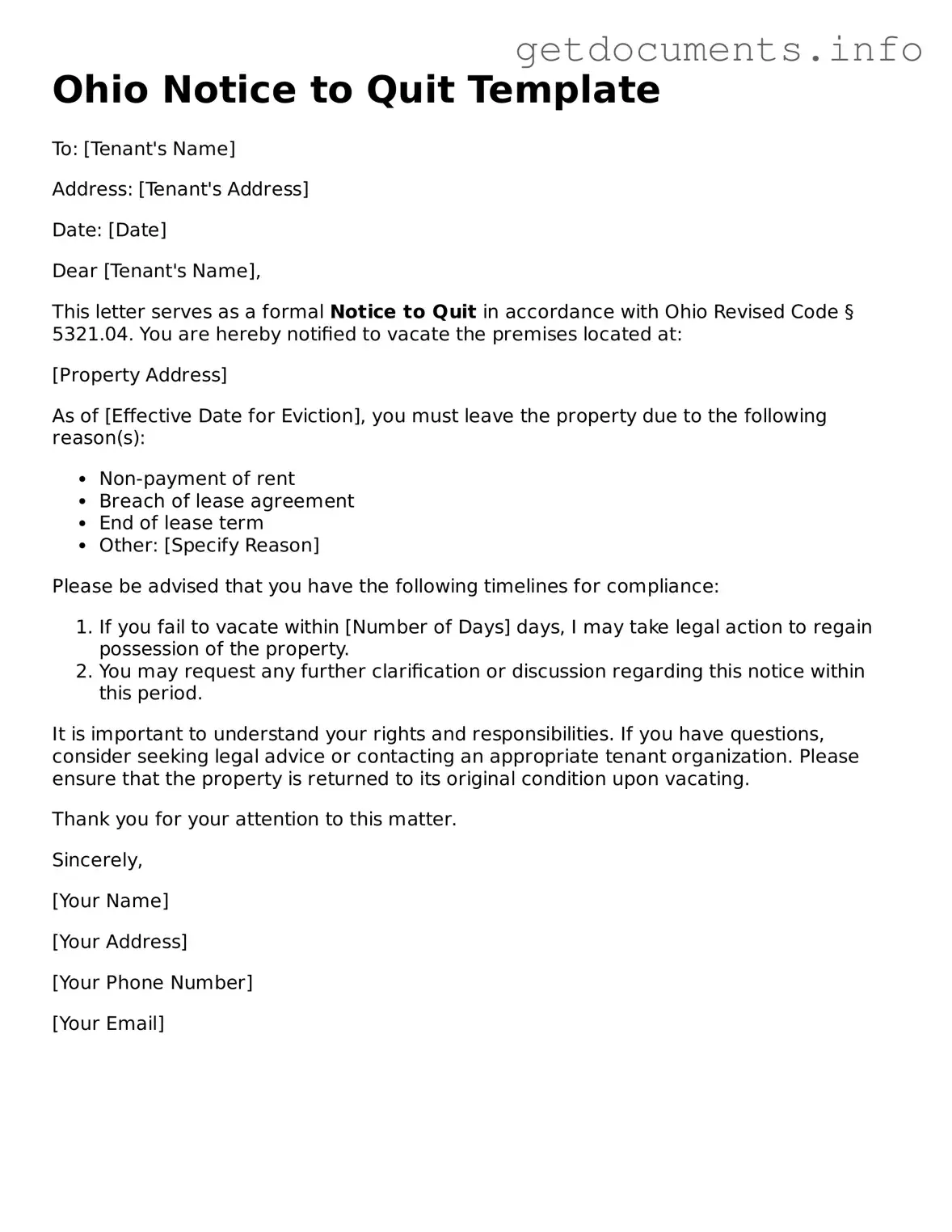Free Notice to Quit Template for Ohio
The Ohio Notice to Quit form is a legal document that a landlord uses to inform a tenant of their intent to terminate the rental agreement. This form is a crucial step in the eviction process, providing the tenant with a specified timeframe to vacate the property. Understanding its requirements and implications is essential for both landlords and tenants navigating housing disputes.
To ensure compliance and protect your rights, consider filling out the form by clicking the button below.
Access Notice to Quit Editor
